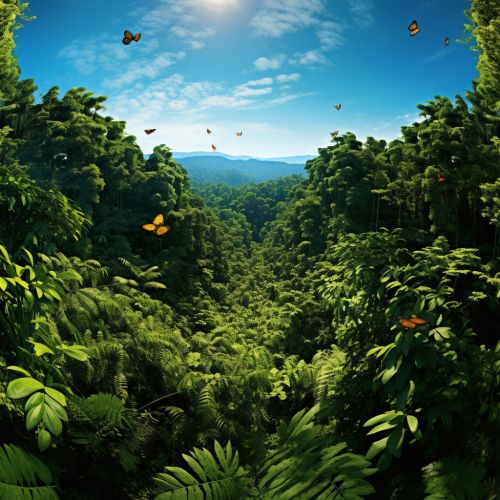Monarch Butterfly Biosphere Reserve
Overview
The Monarch Butterfly Biosphere Reserve is a World Heritage Site located in the Trans-Mexican Volcanic Belt in the central part of Mexico. This reserve provides a sanctuary for the North American monarch butterfly (Danaus plexippus) during its winter hibernation. The reserve covers an area of 56,259 hectares, which encompasses a complex system of eight areas that contain key overwintering sites for the monarch butterfly.


Geography and Climate
The Monarch Butterfly Biosphere Reserve is situated within the Trans-Mexican Volcanic Belt, which is a series of volcanic and mountainous landscapes stretching across central Mexico. The reserve's terrain is characterized by steep slopes and deep ravines, with elevations ranging from 1,800 to 3,000 meters above sea level. The climate varies from temperate to cold, with average annual temperatures ranging from 5 to 15 degrees Celsius.
Flora and Fauna
The reserve is home to a diverse range of flora and fauna. The dominant vegetation is the oyamel fir forest (Abies religiosa), which provides the ideal microclimate for the monarch butterflies during their winter hibernation. Other plant species include pines (Pinus), cedars (Cedrus), and oaks (Quercus), among others. The reserve also supports a variety of wildlife such as white-tailed deer (Odocoileus virginianus), coyotes (Canis latrans), and various species of birds and reptiles.
Monarch Butterfly Migration
The Monarch Butterfly Biosphere Reserve is best known for its role in the annual migration of the North American monarch butterfly. Every year, millions of these butterflies travel thousands of kilometers from Canada and the United States to spend the winter in the reserve. This migration is one of the most remarkable natural phenomena in the world, and it is the reason why the reserve was established and has been designated as a World Heritage Site.
Conservation Efforts
Conservation efforts at the Monarch Butterfly Biosphere Reserve are focused on preserving the oyamel fir forest, which is critical for the survival of the monarch butterflies during their winter hibernation. These efforts include reforestation initiatives, control of illegal logging, and the implementation of sustainable development programs for local communities. Despite these efforts, the reserve and the monarch butterflies continue to face threats from habitat loss and climate change.
